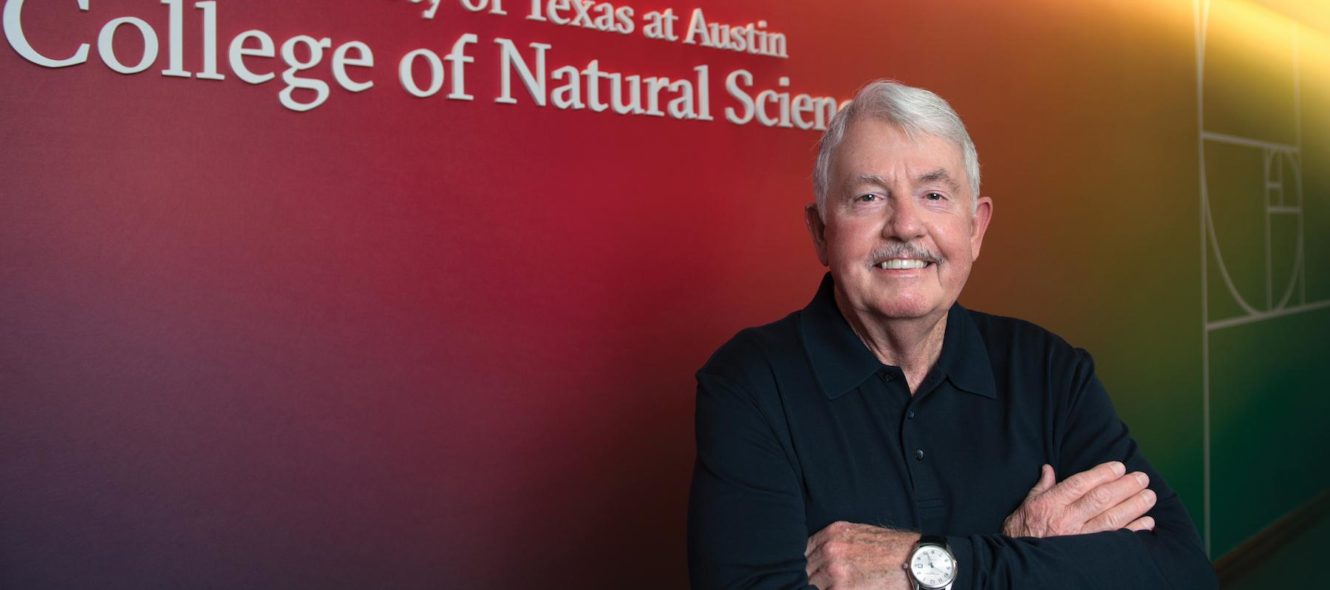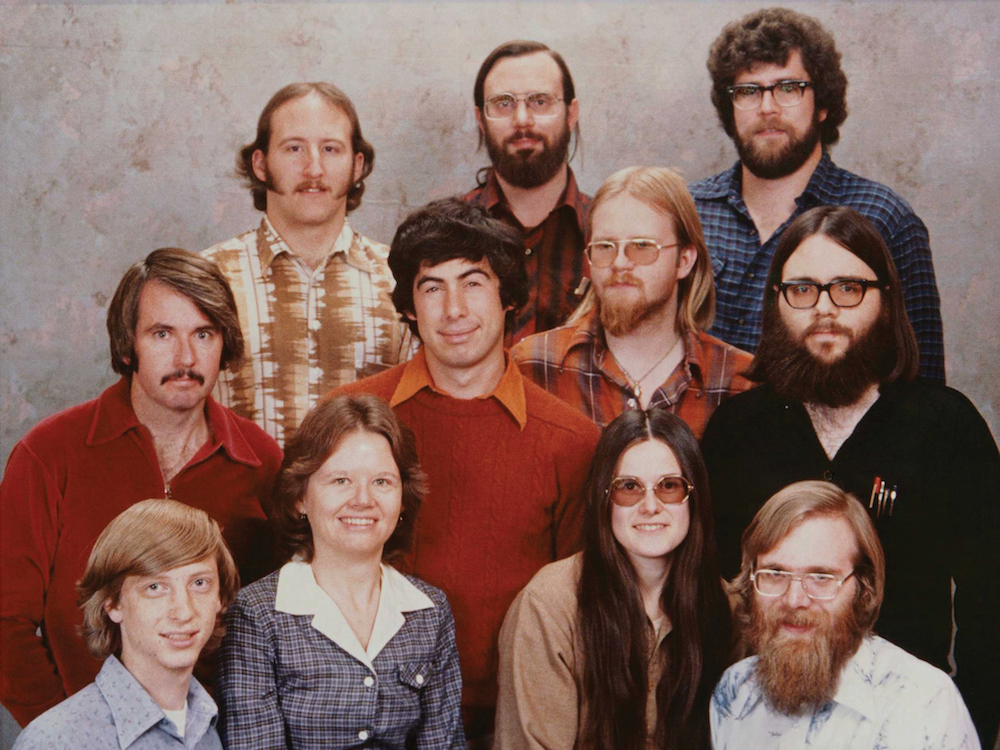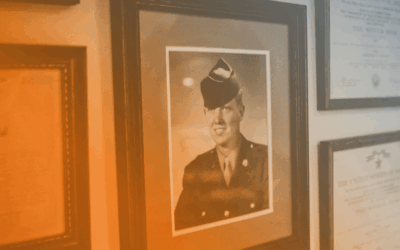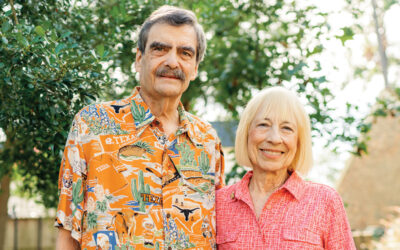The Calculated Life

Microsoft’s Bob O’Rear, formative figure of the PC age who guided astronauts home, is helping his alma mater create new stars.
In 1980, Microsoft was a scrappy little company with about 40 employees known mostly for producing computer languages like BASIC and FORTRAN. Annual revenues were just a few million dollars a year. That changed when they got a call from global computer giant IBM. Could they help with a top-secret project to build, in less than a year, an affordable personal computer for ordinary people?
Microsoft employee No. 7, Bob O’Rear, M.S. ’66, says his team proposed not only to produce languages for the new computer, but to build a complete operating system. It was risky because they’d never built one before, and it had to be done quickly. Their plan was to buy the rights to a bare-bones operating system developed by Seattle Computer Products and modify and expand it for IBM’s new personal computer.
“From the fall of 1980 to mid-summer 1981, I worked almost every day, all day on the IBM project,” O’Rear says. “I worked through all holidays and weekends, canceled vacations and basically put the rest of my life on hold as I worked to make the IBM PC a reality.”
The IBM PC was launched in 1981 and soon became the world’s dominant microcomputer. At its peak, IBM sold one PC every minute of every business day. The age of personal computing had arrived.
From the Panhandle to the Moon
Bob O’Rear was reared in the Texas Panhandle of the 1940s and ’50s by sharecropping grandparents. In high school, he was a B student with few aspirations. But a new loan program for disadvantaged students from his hometown, Perryton, helped him attend Texas Western College (now UT-El Paso).
He initially majored in physical education so that he could return to Perryton to coach tennis and teach health. But many students in his dormitory were engineering majors. “They teased me mercilessly about my PE major,” he recalls, “how easy it was and how difficult their major was and that it really took a lot of brains and superhuman effort to pass calculus and that I probably couldn’t handle it.” He signed up for calculus the next year just to prove that he could do it, and although it was extremely hard work, he made one of the few A’s in the class and changed his major to mathematics. “I was a full-fledged convert to the beauty and power of mathematics,” he says.
Graduating in 1964, he went on to graduate studies in math at The University of Texas at Austin. He took a course calculating the orbits of comets and planets and minored in astrophysics. He also studied computer-programming in the math department, as there was no computer science department yet. He realized that his skills in math, computer programming, and astrophysics could be useful in the aerospace industry. “This was the mid ’60s, and probably the most glamorous job you could find as a math guy was working in the space program,” O’Rear remembers.
When he finished his master’s in 1966, he joined a company in Redondo Beach, Calif., called TRW writing programs for top-secret spy satellites. Two years later he transferred to Houston to support the Apollo space program. O’Rear wrote algorithms to calculate reentry paths for Apollo command modules returning from the moon to ensure that they didn’t skip off the atmosphere, burn up, or splash down too far away from Navy ships.
“It was exciting, and it took an awful lot of work,” he says. “It was very similar to the Microsoft experience in the sense that you worked very hard and you played hard, and you were doing something that you felt was really important.”

Giving Back
After Apollo, O’Rear worked on various military and aerospace projects and co-founded a company that made automated manufacturing systems.
In 1977, a friend told him about a six-person software company in Albuquerque looking for someone with programming and math skills. “He told me about this young guy, Bill, who was running the company and looked about 13 but was very knowledgeable about computers,” O’Rear remembers. “I interviewed with Bill Gates and Paul Allen. It took no time to realize that both of them were very talented.” He joined the team, and it grew to 12 people. They moved to Bellevue, Wash., in 1979. The following year, they received that fateful call from IBM. After the successful launch of the IBM PC, O’Rear opened Microsoft subsidiaries in Europe, Latin America, the Middle East, Hong Kong, and South Africa. He retired in 1993.
In his retirement, O’Rear joined UT’s College of Natural Sciences Advisory Council and helped raise funds for a new computer science building. “Before that building, they were scattered all over campus,” says O’Rear. “They didn’t have their own building or identity, and it was hampering their ability to attract young new professors into the computer science department.”
He convinced Bill Gates to contribute to the effort. As the fundraising effort for what would become the Gates-Dell Computer Science Building was nearing its goal, O’Rear wanted to find a way to thank Gates. So O’Rear funded a student research program in Gates’ honor that would advance one of the billionaire’s major interests: global health. That program, DIY Diagnostics, is a research stream within the Freshman Research Initiative. Student researchers in the stream work on a range of projects from developing apps to detect skin cancer to crafting a cheap, portable device to test mosquitos for malaria or Zika.
“The big accomplishment here is that we’re showing kids what research is like and how fun it can be,” he says. “We’ll develop plenty of additional scientists doing this. If they discover something important from the research, it will be the cherry on top of the sundae.”
O’Rear lives near Seattle with his wife, Cathy, and continues to support the college in many ways, including through IRA transfers and service on its advisory council. He says his time in graduate school at Texas made a huge mark on his career, from introducing him to astrophysics and computer programming to connecting him with potential employers in the aerospace industry.
“My career would never have gone anywhere if it weren’t for The University of Texas,” says O’Rear. “That really opened the doors for me.”
Texas Leader Magazine
More from this series
A Bridge to the Past
Nothing brings history to life like a visit to the sites where it happened. Each year, the Frank Denius Normandy Scholar Program in the College of Liberal Arts takes students to locations significant to World War II, connecting them with the past while helping them build a foundation for their future.
Philanthropic Philosophies
Louise Richman and Dennis Griffith developed an action plan to reach their philanthropic goals.
From the Ground Up
Opportunities for environmental research and discoveries await at the Hill Country Field Station, a world-changing gift from the Winn Family Foundation.


